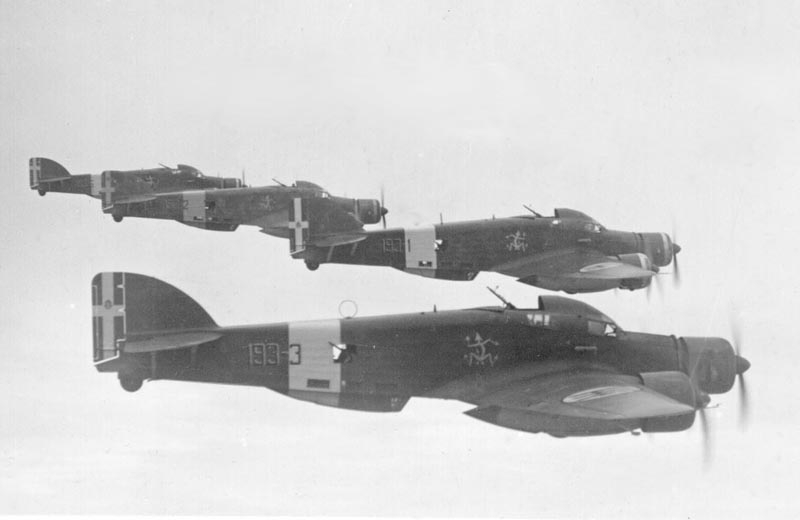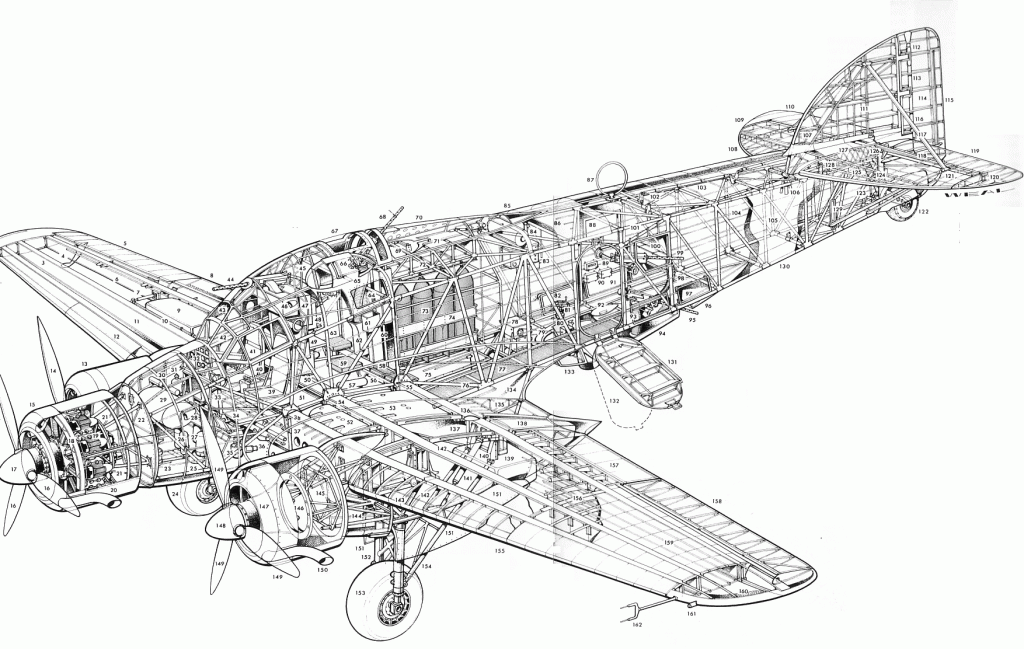To Savoia-Marchetti SM.79 Sparviero (Ιταλικά “Γεράκι”) θεωρείται το πιο γνωστό αεροπλάνο Ιταλικής κατασκευής στον Β’ Παγκόσμιο Πόλεμο. Εφοδιασμένο με τρεις κινητήρες και υλικά κατασκευής ξύλο και μέταλλο προοριζόταν αρχικά ως αεροσκάφος μεταφοράς επιβατών. Η ελαφριά κατασκευή του αεροσκάφους εξασφάλιζε 30 λεπτών πλεύση σε περίπτωση προσθαλάσσωσης. Πρωτοεμφανίστηκε στη διάρκεια του ισπανικού εμφυλίου πολέμου και έλαβε μέρος σε όλα τα μέτωπα στα οποία η Ιταλία συμμετείχε κατά τη διάρκεια του Β ‘Παγκοσμίου Πολέμου. Κατείχε 26 παγκόσμια ρεκόρ ενώ για κάποιο χρονικό διάστημα θεωρείτο ως το γρηγορότερο μέσο βομβαρδιστικό αεροπλάνο στον κόσμο. Στην διάρκεια του πολέμου χρησιμοποιήθηκε σαν βομβαρδιστικό αλλά και σαν τορπιλοφόρο κατά εχθρικών πλοίων (Τorpedo bomber). Κατασκευάστηκαν περίπου 1300 μονάδες ενώ παρέμεινε ενεργό μέχρι το 1952.

The Savoia-Marchetti SM.79 Sparviero (Italian for “Sparrowhawk”) was a three-engined Italian medium bomber with a wood-and-metal structure. Originally designed as a fast passenger aircraft, this low-wing monoplane, in the years 1937–39, set 26 world records that qualified it for some time as the fastest medium bomber in the world. It first saw action during the Spanish Civil War and flew on all fronts in which Italy was involved during World War II. It became famous and achieved many successes as a torpedo bomber in the Mediterranean theater.
The SM.79 was an outstanding aircraft and was certainly the best-known Italian aeroplane of World War II. It was easily recognizable due to its distinctive fuselage dorsal “hump”, and was well liked by its crews who nicknamed it Gobbo Maledetto (“damned hunchback”). It was the most widely produced Italian bomber of World War II, with some 1,300 built, remaining in Italian service until 1952.
The SM.79 project began in 1934 and was conceived as a fast, eight-passenger transport capable of being used in air-racing (the London-Melbourne race). Piloted by Adriano Bacula, the prototype flew for the first time on 28 September 1934. Originally planned to use the 597 kW (800 hp) Isotta-Fraschini Asso XI Ri as powerplant, the aircraft reverted to the less powerful 440 kW (590 hp) Piaggio P.IX RC.40 Stella, a license-produced Bristol Jupiter on which many Piaggio engines were based. The engines were subsequently replaced by Alfa Romeo 125 RC.35s (license-produced Bristol Pegasus).[6]
The prototype (registration I-MAGO) was completed too late to enter the London-Melbourne race, but flew from Milan to Rome in just one hour and 10 minutes, at an average speed of 410 km/h (260 mph). Soon after, on 2 August 1935, the prototype set a record by flying from Rome to Massaua, in Italian Eritrea, in 12 flying hours (with a refuelling stop at Cairo).[7] The SM.79 was by far the most important Italian offensive warplane of World War II, and one of the very few Italian aircraft to be produced in substantial quantities.[8] Production started in October 1936 and continued until June 1943, totalling 1,217 machines.[9] Some were constructed by Aeronautica Umbra of Foligno, makers of the AUT.18.
- Savoia-Marchetti – Σχέδιο 1. SM79
- Savoia-Marchetti – Σχέδιο 2. SM79
- Savoia-Marchetti – SM79 cockpit



